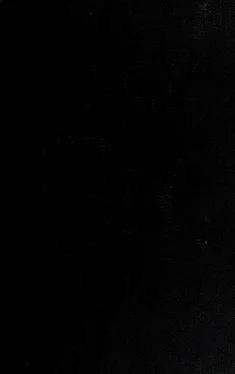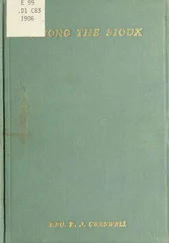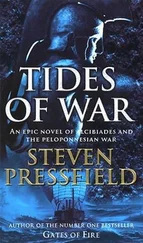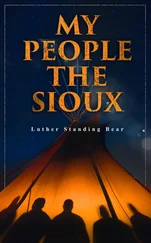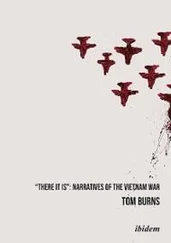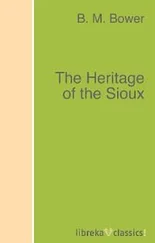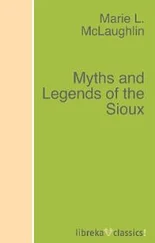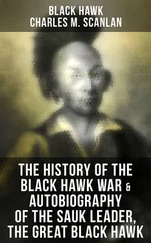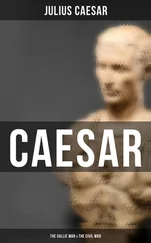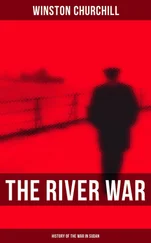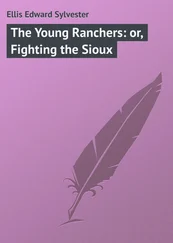Satterlee, P - Narratives of the Sioux war
Здесь есть возможность читать онлайн «Satterlee, P - Narratives of the Sioux war» весь текст электронной книги совершенно бесплатно (целиком полную версию без сокращений). В некоторых случаях можно слушать аудио, скачать через торрент в формате fb2 и присутствует краткое содержание. Жанр: Старинная литература, на английском языке. Описание произведения, (предисловие) а так же отзывы посетителей доступны на портале библиотеки ЛибКат.
- Название:Narratives of the Sioux war
- Автор:
- Жанр:
- Год:неизвестен
- ISBN:нет данных
- Рейтинг книги:4 / 5. Голосов: 1
-
Избранное:Добавить в избранное
- Отзывы:
-
Ваша оценка:
- 80
- 1
- 2
- 3
- 4
- 5
Narratives of the Sioux war: краткое содержание, описание и аннотация
Предлагаем к чтению аннотацию, описание, краткое содержание или предисловие (зависит от того, что написал сам автор книги «Narratives of the Sioux war»). Если вы не нашли необходимую информацию о книге — напишите в комментариях, мы постараемся отыскать её.
Narratives of the Sioux war — читать онлайн бесплатно полную книгу (весь текст) целиком
Ниже представлен текст книги, разбитый по страницам. Система сохранения места последней прочитанной страницы, позволяет с удобством читать онлайн бесплатно книгу «Narratives of the Sioux war», без необходимости каждый раз заново искать на чём Вы остановились. Поставьте закладку, и сможете в любой момент перейти на страницу, на которой закончили чтение.
Интервал:
Закладка:
"Friends and Members: We are guests of the Center Improvement Association, whose object is not only that which its name implies, but also to preserve and perpetuate the history, traditions, and landmarks of this section of our city. We are here this evening to honor Captain Strout's Company of citizen soldiers, partially made up of business men from this part of the city, who in September, 1862, went to battle at Acton and Hutchinson against the Sioux Indians, so that the settlers might pursue the tilling of their lands unmolested."
Mr. Knoblauch then introduced Marion P. Satterlee as master of ceremonies for the evening, who, by the aid of Edward A. Bromley's stereopticon views, told of the upbuilding of the Association district since 1858. Then followed a description of the organization of Strout's Company, during the excitement of the massacre tidings of murder and destruction; of the sacrifices of these men, who left their families and homes to fight the savages. A detailed statement of their marches and the battles was given, also an account of the killing of Chief Little Crow by Nathan Lamson and his son Chauncey, near Hutchinson, on July 3, 1863.
A most able address was given by Ex-President William W. Folwell of the State University, on '' The Causes leading to the Massacre of 1862."
The roll of the men composing the Company was then called; ten responded to their names, eleven were reported absent, 27 were reported dead, and for 22 no report was made.
In response to the toast, "To the Dead," Ex-Governor Samuel R. Van Sant gave a fine eulogy of the men who died for their country fighting rebellion in the South or the Indians at home. He declared that the present generation is receiving the benefits of the deeds of patriots, Union, Confederate, and civilian soldiers, whose work lives after them.
To the toast, "To the Absent," Edward A. Bromley responded, comparing the sad absence long ago of loved ones "gone to the war" with our regrets for those absent from this reunion.
The toast, "To those Present," was responded to by J. H. Crandall, a member of Strout's Company, who encouraged all to show their appreciation of our triumphal progress as a nation, in war and in peace, by true manhood and right living.
At the call for soldiers of the Sioux War present, twelve men who fought at Birch Coulie, and four or five each from Fort Ridgely, New Ulm, Forest City and Wood Lake battles, responded by rising and were heartily cheered.
ROSTER OF CAPTAIN STROUT'S COMPANY AT ACTON. At the Roll Call after the banquet those present responded to their names; for the dead and the absent, response was made by members of the Company.
Adkins, F., dead. Corratt, C., no report.
Allan, William C., present. Crandall, James H., present.
Ames, James A., dead. Gushing, M., no report.
Beadle, Frank, sergeant, dead. Day, J. W., in California. Bennett, Abner C., died of wounds.Doherty, A., in city. Blondo, Lyman, dead. Douglass, C. H., no report.
Bostwick, R. C., dead. Florida, Joel, dead.
Brown, W., quartermaster sergt., Friederich, A. A., present.
dead. Gemasche, George, no report.
Carr, Ezra T., sergeant, dead. Getchell, Alva, killed at Acton. Chambers, Thomas, dead. Getchell, D. W., sergeant, in city.
Clark, W. A., lieutenant, dead. Gideon, George W., killed at Acton.
MINNESOTA HISTORICAL SOCIETY COLLECTIONS.
Green, John, dead. Ham, C. D., no report. Handy, DeWitt C., present. Handy, Joel, dead. Hanscomb, A. B., no report. Hawkins, D. C., no report. Hart, Joseph, no report. Higgins, Judson C., in city. Hoag, A., no report. Hubbard, R. R., no report. Huckins, J. W., Northfield. Hunter, William, no report. Jacques, Winter, in city. Johnson, C., in city. Kenna, Michael, sergeant, dead. Kirtz, Fred, no report. Laraway, Albert, dead. Larkins, J. K., no report. Little, George W., no report. McConnell, J. C., no report. McNeill, Neill, dead. Marshall, James, present. Marshall, Thomas, dead. Mayer, Robert, no report. Merritt, L. W., in city. Morrison, George H., dead. Muir, Robert, no report.
Murch, J. P., no report. Murray, John W., present. Perkins, J. H., dead. Rose, Anson H., present. Smith, H. A., no report. Snell, S. D., no report. . Stone, Edwin, killed at Acton. Strout, Richard, captain, dead. Stubbs, Milton C., present. Sweeney, James, Robbinsdale. Sweesing, Fred, present. Thompson, N. R., dead. Tippin, F., no report. Weeks, N. R., died of wounds. Wise, A. H., no report. Wolverton, J. A., dead. Worthingham, Emory, dead.
SCOUTS.
Jesse V. Branham, Jr., Fargo,
Thomas G. Holmes, Long Beach, Cal.,
Albert H. Sperry, present, these being of Captain Whitcomb's Company, Forest City.
Albert H. DeLong, Forest City, Citizen guide for Captain Strout.
THE KILLING OF CHIEF LITTLE CROW.
Tay-o-ah-ta-doo-tah (His Scarlet People) was the third chief of the Kaposia band of Medawakantonwan Dakotas (Sioux) to be known by the name of ''Little Crow." This tribe was divided into eight bands. The lower band, called Kiuska, lived where Winona now stands; the Kaposia band, just below St. Paul; Black Dog, just above Fort Snelling; Pinisha, at Nine Mile creek on the Minnesota river; Reyata Otonwa, at Lake Calhoun; Tewapa, at Eagle creek; and the Tintatonwan, at Shakopee, the largest village of the tribe. Little Crow had six wives and at least twenty-two children. He put away his first two wives when he married the third one. His mother was named Minne-okha-da-win (musical sound of water running under the ice). His family history was one of
tragedy. His father was accidentally shot while pulling his gun from a wagon, and died of the wounds. Two brothers were killed by the Chippewas, and two sisters committed suicide. Little Crow's braves killed two of his brothers in a battle for the chieftainship, and he was shot through both wrists in the fight. Army surgeons would cut off the maimed wrists, but it was refused and the Indian medicine man proved his superiority by saving his patient and both wrists. The wounds were disfiguring and were always concealed by bands of skunk-skin, as degrading to a chief.
Little Crow is the reputed leader in the Massacre of 1862, though he was only a minor chief in the Sioux tribe. As a matter of fact, he was defied by a large number of friendly (or at least neutral) Indians, who threatened several times to take his captive whites from him, and who saved many white people from being murdered. Little Crow had more credit than was his due, and investigation will show that the massacre was chiefly the work of a disorganized gang of cutthroats whom no one could call warriors in a true sense. After the crushing defeat at Wood Lake by Gen. H. H. Sibley, Little Crow fled into Dakota, from whence he returned the following summer (1863), for the purpose of stealing horses and provisions from the Minnesota settlers. His companions were his son, Wo-wi-napa (One who appeareth), Hi-u-ka, a son-in-law, and a number of others. They committed a number of depredations, among others killing James McGannon in Wright county. The story of the shooting here given is related by J. B. Lamson (called Birney), of Annandale, Minn., the brother of Chauncey, and son of Nathan, who jointly killed Little Crow on July 3, 1863.
In the early summer of 1863 (following the massacre, which commenced August 17, 1862), most of the neighboring settlers at Hutch-inson were gathered at the village so as to be near the stockade, which was guarded by soldiers and civilians, in expectation of attack by the Indians who had been on the warpath since the outbreak, and who had previously attacked the town in September, 1862. Some of the settlers were trying to raise a little crop for food, on their farms, and the work was done by a part of the family while others were scouting for Indians. I had spent most of the spring on our homestead, about six miles directly north of the village, caring for the
Читать дальшеИнтервал:
Закладка:
Похожие книги на «Narratives of the Sioux war»
Представляем Вашему вниманию похожие книги на «Narratives of the Sioux war» списком для выбора. Мы отобрали схожую по названию и смыслу литературу в надежде предоставить читателям больше вариантов отыскать новые, интересные, ещё непрочитанные произведения.
Обсуждение, отзывы о книге «Narratives of the Sioux war» и просто собственные мнения читателей. Оставьте ваши комментарии, напишите, что Вы думаете о произведении, его смысле или главных героях. Укажите что конкретно понравилось, а что нет, и почему Вы так считаете.
